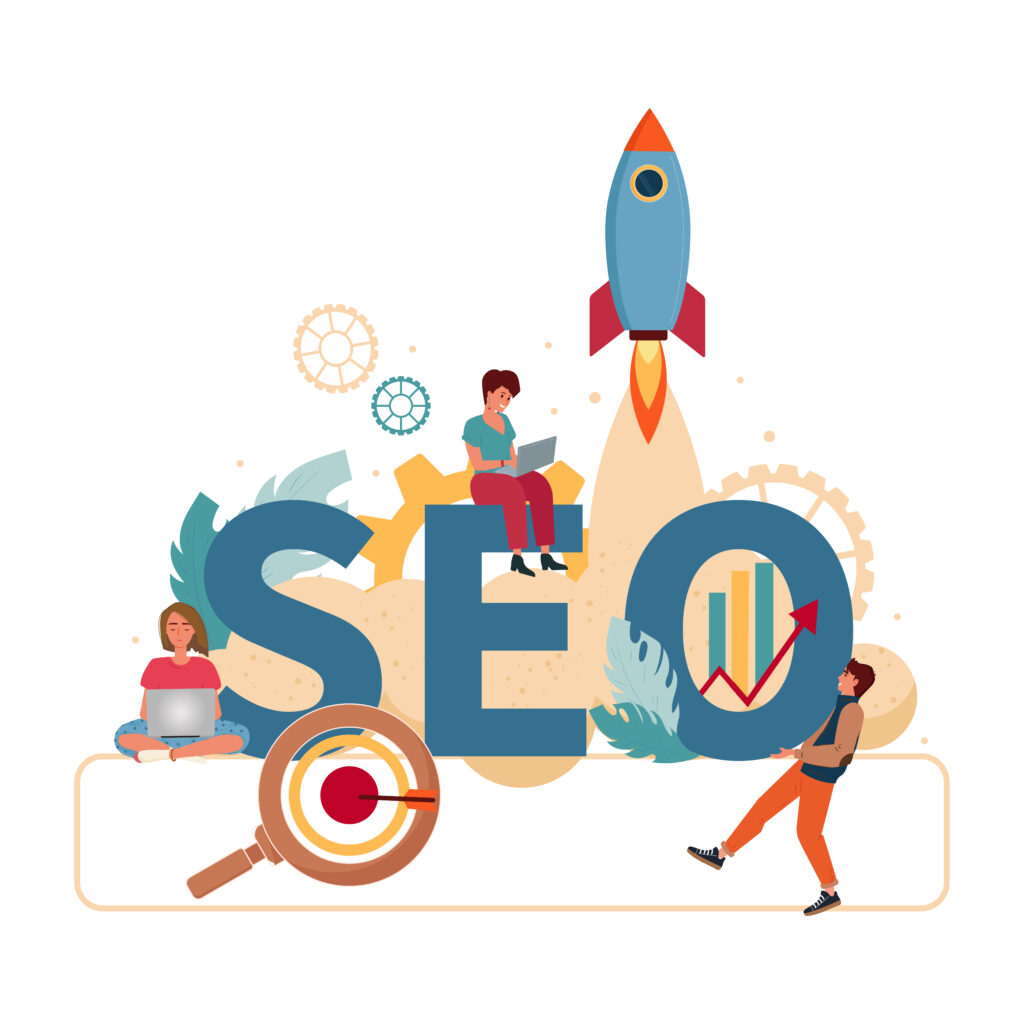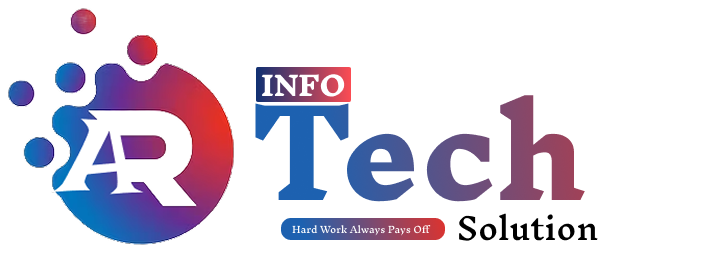Author: Rahul | The AR Infotech Solutions
A Quick Truth Before We Start
Open Google and type “best mobile under ₹20,000” or “IT company near me.” Be honest—did you go to page two? Most people don’t. That’s the quiet effect of SEO: the best-built, most helpful pages float to the top; the rest fight over whatever’s left.

We’ve seen this in the wild. A Delhi café known for its cappuccino called us, puzzled: great reviews from walk-ins, weak numbers online. Their Google profile had an old number, no photos, and wrong categories. We cleaned the basics—updated details, added real photos, and aligned listings across platforms. Three months later, weekend footfall doubled. Same beans, same barista. Different visibility.
That’s the essence of SEO in digital marketing: showing up exactly when people are already looking.
What Is SEO in Simple Words?

SEO (Search Engine Optimization) is the work you do so your website is easy to find when someone searches for what you sell.
- A clothing store wants to appear for “best ethnic wear online.”
- A law office wants to appear for “lawyers near me.”
- A SaaS company wants to appear for “expense tracker for startups.”
Ads can rent attention. SEO earns it. You don’t pay for every click; you build a site and a body of content that search engines trust enough to recommend.
Picture the internet as a city, Google as the map, and SEO as the way you pin your shop on the main road—not down an unlit lane.
How Does SEO Work — Step by Step?
Google’s system feels complex, but the motion is simple.
1) Crawling
Search engines send out automated “bots” to discover pages. They follow links, read text, look at images—like a librarian walking the stacks and making quick notes on every book.
2) Indexing
Those notes go into Google’s index (its catalog). If your page isn’t indexed, it’s invisible—a printed book that never reached the shelf.
3) Ranking
When someone searches, Google scans that catalog and pulls the pages it trusts most. It weighs hundreds of signals: how closely your topic matches the query, how fast your page loads, how it performs on mobile, the depth and clarity of your content, the quality of backlinks, and even how users behave once they land.
A tiny example: write a clear, genuinely helpful guide titled “How to do SEO for website step by step.” If it answers the intent better than competitors—clean structure, real examples, quick load, useful visuals—it deserves to sit higher.
In short, SEO works by making your site easy to discover, simple to understand, and strong enough to earn the top spots.
The Main Purpose of SEO
Traffic is nice. Qualified traffic pays the bills.
The goal of SEO is intent-match: connect your product or service with the exact people searching for it, right when they’re ready to learn or decide. Done right, SEO becomes your quietest, most reliable sales engine—steady, predictable, compounding.
And unlike ads that stop the moment the card is paused, a well-optimized page keeps working for months—often years—after you publish.
The Three Pillars of SEO
When clients ask “what is SEO and how does it work—with examples?” we bring it back to three pillars you can actually control.

1) On-Page SEO (Your Content & Structure)
- Titles and meta descriptions that match search intent.
- Logical headings (H1, H2, H3) and scannable sections.
- Internal links that nudge readers to the next useful page.
- Helpful, original content—no filler.
- Images with alt text and sensible, compressed file sizes.
Think of it as arranging shelves in a store so people can find what they came for without asking.
Also read The Best Free SEO Plugins for Your WordPress Website: Boost Your Rankings Now!
2) Off-Page SEO (Your Reputation)
- Backlinks from credible, relevant websites.
- Brand mentions, reviews, and PR features.
- A public profile that signals: “Others trust this site—Google can too.”
Like shopkeepers in the market recommending you to their customers.
3) Technical SEO (Your Foundation)
- Fast pages on mobile and desktop.
- Clean URLs, no dead ends.
- HTTPS security by default.
- XML sitemaps and a tidy robots.txt.
- Structured data so search results can show rich details.
This is the light over the door and a smooth front latch—basic, but without it the best stock won’t matter.
Types of SEO in Digital Marketing (With Use Cases)
Different businesses need different mixes:
- Local SEO — Physical locations and service areas (gyms, cafés, salons). “Near me” searches, reviews, Google Maps.
- E-commerce SEO — Online stores. Strong product pages, schema (ratings, price, stock), well-built categories.
- Content SEO — Blogs, guides, comparisons, FAQs—built for people first, formatted for search engines to parse.
- Technical SEO — Crawl issues, Core Web Vitals, JavaScript rendering, sitemaps.
- Off-Page SEO — Backlinks, mentions, partnerships, reviews.
- Enterprise SEO — Marketplaces/media with thousands of pages; needs automation and careful governance.
A local gym leans Local. An eco-friendly D2C brand leans E-commerce + Content. B2B SaaS often leans Content + Technical.
A Search Engine Optimization Example (From Our Desk)
An e-commerce client selling eco-friendly candles had quality products and slow sales. We:
- Rewrote product copy to answer real buyer questions (wax, burn time, fragrance notes, allergy info).
- Compressed images and fixed layout shifts to improve speed.
- Added product schema (ratings, price, availability) for richer results.
- Earned backlinks from sustainability blogs and gift guides.
Six months later, organic traffic was up ~170%, and orders followed—no ads. Just fundamentals, executed well.
Can I Do SEO on My Own?
You can, and many founders do at the start. Focus on what you control:
- Publish useful posts that answer real customer questions.
- Fix page titles, headings, and internal links.
- Improve mobile speed.
- Claim and complete your Google Business Profile if you’re local.
- Track performance in Google Search Console and GA4.
As you grow, advanced work—link earning, technical audits, content at scale—usually benefits from experienced hands. That’s where an in-house specialist, a trusted freelancer, or an agency like ours pays for itself.
EEAT in Real Life (Experience, Expertise, Authoritativeness, Trust)
Google rewards content that feels like it came from someone who’s actually done the work.
- Experience — Show process, screenshots, case studies, lessons learned.
- Expertise — Use bylines (hello, Rahul), credentials, and accurate references.
- Authoritativeness — Earn mentions and links from places your audience respects.
- Trust — Secure site, clear claims, transparent pricing, helpful support pages.
If a real person would bookmark your page and share it with a colleague, you’re on the right track.
A Quick SEO Checklist for Business Owners
- Does each page target one clear search intent?
- Is the main answer visible within two scrolls?
- Do you load faster than key competitors on mobile?
- Do your product/service pages read like a helpful salesperson, not a brochure?
- Are there internal links guiding readers logically?
- Do you have at least a few quality backlinks?
If most of these are “yes,” your SEO is already moving.
Why SEO Still Matters in 2025
Digital marketing is noisy—ads, reels, influencer pushes, email blasts. Useful, all of it. But when someone searches, they’re telling you exactly what they want. That intent is gold. SEO makes sure you appear at that moment—credible, visible, ready.
At The AR Infotech Solutions, we see this daily. Ads deliver spikes. SEO builds a slope that keeps rising.
How SEO Really Works for Businesses in 2025 (Our Practice)
Here’s how we actually run projects:
- Keyword Research — Real queries customers type (tools + common sense).
- On-Page Implementation — Titles, headings, content, internal links.
- Technical Cleanup — Speed, crawl depth, mobile optimization.
- Content Plan — Blogs, FAQs, resources that teach and convert.
- Backlink Building — Guest posts, PR mentions, credible citations.
- Tracking & Adjusting — GA4 and Search Console guide monthly refinements.
It’s deliberate work, repeated with discipline.
Two More Useful Lanes
- Voice SEO — People ask assistants real questions; write the way they speak.
- Enterprise SEO — At 10k+ pages, taxonomy, internal linking, and change control decide everything.
Quick win case: A personal fitness trainer optimized Google Business Profile, published two local-intent posts, and earned a couple of relevant local links. Four months later, “personal trainer in Kurukshetra” became a steady source of weekly calls.
Best SEO Practices in 2025
- Lean on EEAT — Real author, real expertise, real trust.
- Write Helpful Content — For people first; format for machines second.
- Use Tools Wisely — Let tools guide research and QA; keep the final voice human.
- Think Beyond Text — Voice and visual search are rising; image alt text and media quality matter.
- Add Structured Data — Product, FAQ, and review schema make results stand out.
FAQs Businesses Ask
1) Can I do SEO on my own?
Yes—start with content, titles, speed, and basic local setup. Scale with experts when growth needs more.
2) How long does SEO take?
Expect 3–6 months for traction, longer in competitive niches. It compounds.
3) What’s the main purpose of SEO?
To connect your offer with the right people at the right time. Visibility → Leads → Sales.
4) Is SEO worth it in 2025?
Yes. Ads are costly sprints. SEO is stamina—and builds an asset you own.
5) Are SEO jobs growing?
They are—content writers, technical specialists, strategists, and remote freelancers. Demand keeps rising.
Conclusion : Why SEO Is the Foundation of Digital Marketing
When someone types “best web design company in India” or “SEO agency near me,” they’re not browsing for fun—they’re ready to decide. SEO is how you meet them there.
At The AR Infotech Solutions, we’ve watched small shops, fast-moving startups, and large teams change trajectory with consistent SEO. Ads can give you a boost. SEO gives you momentum.
If you’re unsure where to begin, start with visibility. Everything else follows.browsing for fun—they’re ready to decide. SEO is how you meet them there.
At The AR Infotech Solutions, we’ve watched small shops, fast-moving startups, and large teams change trajectory with consistent SEO. Ads can give you a boost. SEO gives you momentum.If you’re unsure where to begin, start with visibility. Everything else follows


